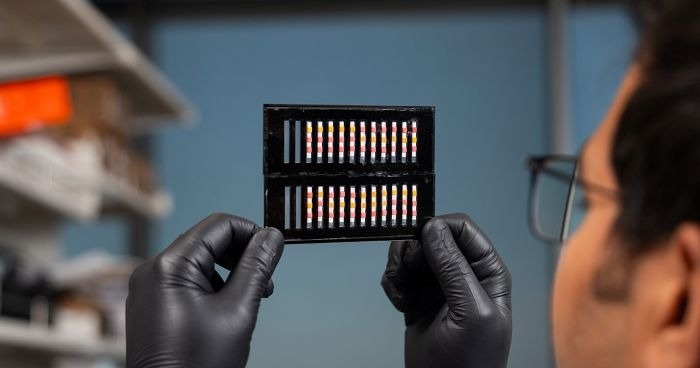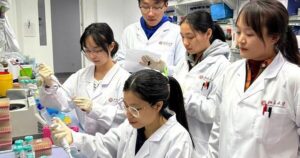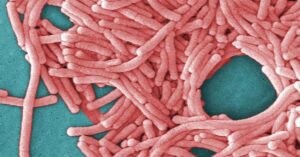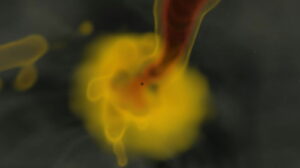
A team at Purdue University has expanded their toolkit to include a groundbreaking portable, paper-based biosensor designed to detect genetically modified (GM) corn and soybean. Utilizing a technique known as loop-mediated isothermal amplification (LAMP), this biosensor offers a faster and more cost-effective alternative to existing field-ready molecular diagnostic tools. The innovation promises to empower farmers with on-the-spot testing capabilities.
The biosensor, which can be used by farmers whenever needed, is the brainchild of Bilal Ahmed, a Postdoctoral Research Associate in Agricultural and Biological Engineering at Purdue University. The development follows a series of rapid assays previously created by Associate Professor Mohit Verma and his team, targeting threats such as highly pathogenic avian influenza, fecal contamination on produce, bovine respiratory disease, and COVID-19.
Advancements in Biosensor Technology
The biosensor technology has been disclosed to the Purdue Innovates Office of Technology Commercialization, which has filed for a patent. Purdue has exclusively licensed the innovation to Krishi, Inc., a company specializing in rapid and user-friendly molecular diagnostics. Verma, who serves as Krishi’s chief technology officer, highlighted the significance of this development.
“This study was the first demonstration from our lab on the use of the biosensors on plant material,” Verma stated. “It further demonstrates the use of this LAMP-based technology for One Health applications that cut across ecosystems – human, animal, and plant well-being.”
The biosensor produces results in under an hour after sample extraction, with each test costing just $2.90—far less than the $8 to $9 per test for other LAMP-based tools. This cost efficiency, coupled with lower hardware expenses, makes it an attractive option for farmers.
Technical Insights and Comparisons
Using only a small, quarter-inch pinch of leaf tissue, the biosensor detects GM traits without requiring DNA purification. This contrasts with traditional polymerase chain reaction (PCR) methods, which demand costly lab equipment and highly purified DNA.
“PCR is considered the gold standard in molecular biology,” Ahmed explained. “But with this LAMP method, we eliminate the need for DNA extraction and purification.”
Like PCR, LAMP accurately targets specific DNA sequences. Ahmed noted, “We first optimized our LAMP biosensor method with purified DNA, and then we moved to the crude leaf extract.”
In the lab, the paper-based biosensor performed well with purified DNA. However, the cost and lab access needed for DNA purification limited its practicality in the field, prompting the team to switch to crude leaf extract. The preparation involves homogenizing leaf tissue and diluting it at a ratio of one part extract to seven parts water.
“We use that crude extract directly with our biosensor. Our biosensor with the leaf extract is as good as purified DNA,” Ahmed stated.
Broader Implications and Future Applications
While lateral flow devices also exist for GM crop detection, they rely on protein expression in plants and often fail with hybrids that don’t express the targeted proteins. This new DNA-focused method offers a clear advantage, particularly for detecting Roundup Ready 1 and 2 soybean varieties and the Roundup Hybridization System 1 (RHS1) trait in corn.
Ahmed elaborated, “The male part of the plant specifically is not glyphosate-resistant. Glyphosate is a pesticide. If there is a spray over that plant, the male part will die, but the rest of the plant will survive. We successfully developed our paper-based biosensor based on that particular trait.”
The Purdue-Bayer Crop Science team is exploring further applications, recognizing the platform’s adaptability to other GM crops or traits. In their journal article, they emphasize the biosensor’s potential as a practical solution for field-level GMO monitoring.
As the agricultural industry continues to grapple with the challenges of GM crop detection, innovations like Purdue’s paper-based biosensor could play a pivotal role in ensuring sustainable and efficient farming practices. The move represents a significant step forward in the quest for accessible and affordable agricultural diagnostics.







